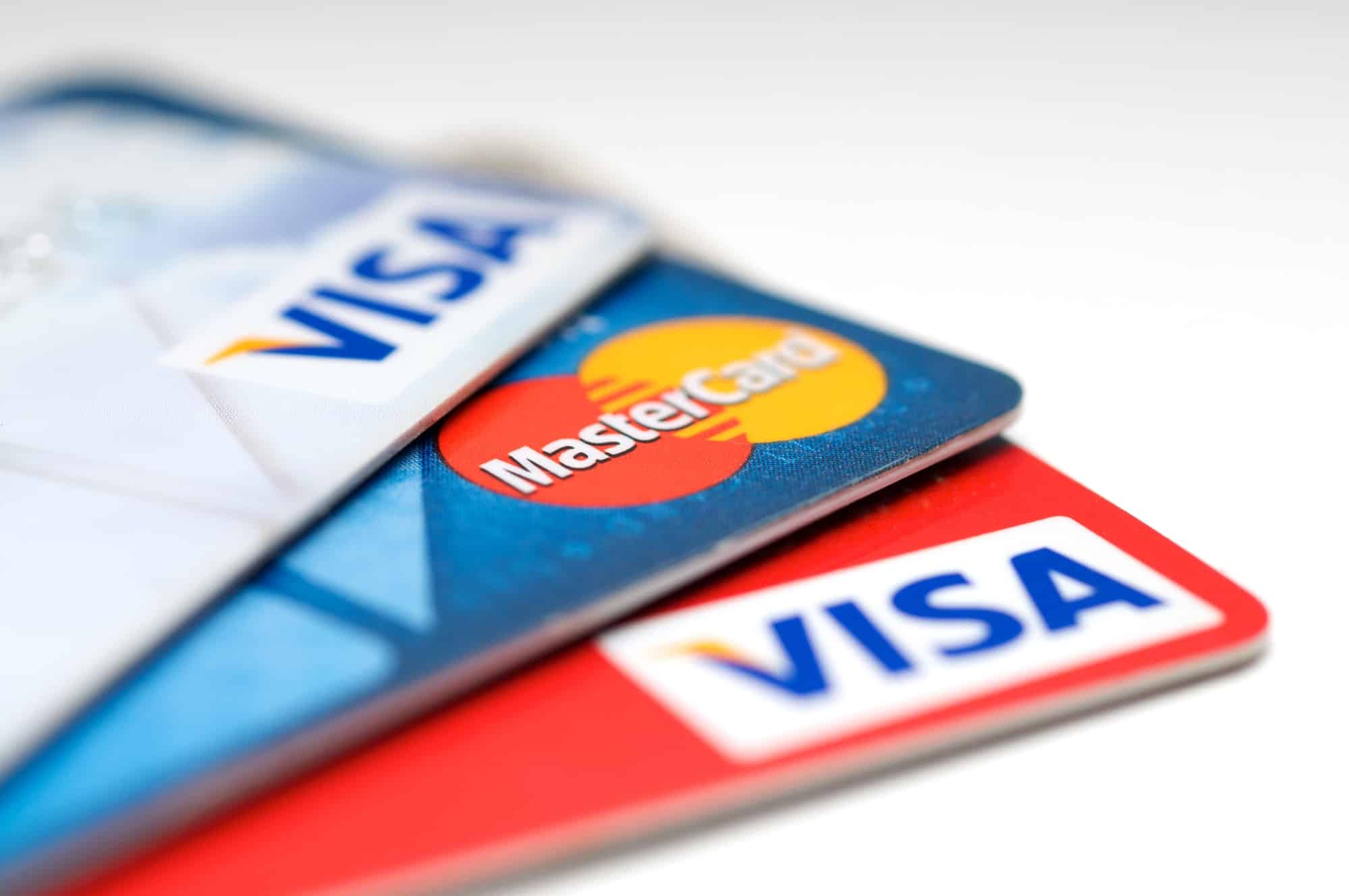

Finance
How To Become A Credit Card Affiliate
Published: October 27, 2023
Learn how to become a credit card affiliate and generate income through finance partnerships. Discover the secrets to maximizing your earning potential in the finance industry.
(Many of the links in this article redirect to a specific reviewed product. Your purchase of these products through affiliate links helps to generate commission for LiveWell, at no extra cost. Learn more)
Table of Contents
- Introduction
- Understanding Credit Card Affiliate Marketing
- Finding the Right Credit Card Affiliate Program
- Applying for a Credit Card Affiliate Program
- Understanding Affiliate Commissions and Payouts
- Promoting Credit Cards as an Affiliate
- Building a Successful Credit Card Affiliate Website
- Tracking and Analyzing Affiliate Performance
- Compliance and Legal Considerations
- Tips for Success as a Credit Card Affiliate
- Conclusion
Introduction
Welcome to the world of credit card affiliate marketing! If you’re looking for a way to monetize your website or blog and have a passion for finance, becoming a credit card affiliate could be the perfect opportunity for you. In this article, we’ll explore the ins and outs of credit card affiliate marketing to help you understand how it works and how you can succeed in this field.
Credit card affiliate marketing is a type of performance-based marketing where you earn a commission for driving new customers to apply for credit cards. As an affiliate, you partner with credit card issuers and promote their products on your website or blog. When someone clicks on your affiliate link and successfully applies for a credit card, you earn a commission.
Why is credit card affiliate marketing so popular? Well, credit cards are essential financial products that millions of people use daily. By promoting credit cards, you can tap into a large market and earn passive income from the comfort of your own home. Plus, credit card affiliate programs often offer attractive commission rates, making it a lucrative venture if done correctly.
However, success in credit card affiliate marketing requires more than just signing up for a program and placing some affiliate links on your website. It requires a deep understanding of the finance industry, search engine optimization (SEO) techniques, and effective marketing strategies.
In this article, we’ll guide you through the process of becoming a credit card affiliate, from finding the right affiliate program to building a successful credit card affiliate website. We’ll also provide tips for maximizing your earnings and complying with legal regulations.
So, if you’re ready to dive into the exciting world of credit card affiliate marketing, let’s get started!
Understanding Credit Card Affiliate Marketing
Credit card affiliate marketing is a unique branch of affiliate marketing that focuses specifically on promoting credit cards. As a credit card affiliate, your main objective is to drive new customers to apply for credit cards through your affiliate links.
When someone clicks on your affiliate link and successfully applies for a credit card, you earn a commission. The commission rate can vary depending on the affiliate program and the specific credit card being promoted.
One of the key benefits of credit card affiliate marketing is that credit cards are a highly popular and universally used financial product. Almost everyone, from students to professionals, uses credit cards for their day-to-day transactions. This means that by becoming a credit card affiliate, you have the potential to tap into a massive market and earn a significant income.
However, becoming a successful credit card affiliate requires a thorough understanding of the finance industry and the different credit card products available. You need to educate yourself about the various types of credit cards, such as rewards cards, balance transfer cards, and cash-back cards, to effectively promote them to your audience.
Moreover, you need to stay updated with the latest trends and changes in the credit card industry. This includes keeping an eye on new credit card launches, changes in terms and conditions, and any relevant industry news. By staying informed, you can provide valuable and up-to-date information to your audience, increasing your credibility as a credit card affiliate.
Another essential aspect of credit card affiliate marketing is understanding your target audience. Different credit cards cater to different demographics and financial needs. For example, travel rewards credit cards may be more appealing to frequent travelers, while low-interest rate credit cards may attract those looking to consolidate their debt.
By understanding your audience’s preferences and financial goals, you can tailor your content and promotions to best suit their needs. This targeted approach will increase the likelihood of attracting qualified leads who are more likely to apply for a credit card through your affiliate links.
In the next section, we’ll explore how to find the right credit card affiliate program to partner with and how to apply for it. Stay tuned!
Finding the Right Credit Card Affiliate Program
When it comes to credit card affiliate marketing, finding the right affiliate program to partner with is crucial. The success of your credit card affiliate marketing efforts relies heavily on choosing the right program that aligns with your audience and offers attractive commission rates.
Here are some key factors to consider when searching for the right credit card affiliate program:
- Reputation and Credibility: Look for affiliate programs offered by well-known and reputable credit card issuers. Affiliate programs backed by established financial institutions tend to offer more reliable payouts and better promotional materials.
- Commission Rates and Structure: Compare the commission rates offered by different credit card affiliate programs. Look for programs that offer competitive commission rates and consider whether they offer tiered structures, where you can earn higher commissions based on the volume of referrals.
- Product Range: Assess the variety and quality of credit card products offered within the affiliate program. Look for programs that provide a wide range of credit cards catering to different demographics and financial needs. This will allow you to target a broader audience and increase your chances of earning commissions.
- Promotional Materials: Evaluate the quality and availability of promotional materials provided by the affiliate program. Effective marketing collateral such as banners, landing pages, and educational resources can greatly enhance your ability to promote credit cards to your audience effectively.
- Tracking and Reporting: Consider the tracking and reporting capabilities of the affiliate program. Ensure that they provide accurate and detailed tracking of referred customers, as well as transparent reporting of your affiliate earnings. This will help you analyze your performance and optimize your marketing strategies.
- Support and Resources: Look for affiliate programs that offer reliable support and resources to assist you in your marketing efforts. This may include dedicated affiliate managers who can answer your questions and provide guidance, as well as educational materials to help you stay updated on the latest trends and best practices in credit card marketing.
Once you have identified potential credit card affiliate programs that meet your criteria, take the time to research and read reviews from other affiliates. This can provide valuable insights into the program’s reputation and the experiences of other affiliates who have worked with them.
Remember, it’s essential to choose an affiliate program that aligns with your niche and audience. By selecting the right program, you can maximize your earning potential and ensure a successful credit card affiliate marketing journey.
Applying for a Credit Card Affiliate Program
Once you have identified a credit card affiliate program that aligns with your goals and audience, it’s time to apply and become a part of the program. The application process may vary depending on the affiliate program, but generally, it involves the following steps:
- Review the Program Requirements: Before applying, carefully review the program requirements outlined by the affiliate program. Ensure that you meet all the eligibility criteria, such as having a website or blog with relevant content and traffic.
- Complete the Application Form: Fill out the affiliate program’s application form. Provide accurate and detailed information about your website or blog, your target audience, and your promotional strategies. Be transparent about your methods and ensure that your website complies with any guidelines specified by the program.
- Wait for Approval: After submitting your application, you will need to wait for the affiliate program to review and approve your application. This process can take anywhere from a few days to a few weeks, depending on the program.
- Read and Accept the Terms: Once your application is approved, you will receive an acceptance notification along with the program’s terms and conditions. Take the time to read through the terms carefully and ensure that you understand and agree to them. If you have any questions or concerns, don’t hesitate to reach out to the affiliate program’s support team for clarification.
- Access Your Affiliate Dashboard: Upon accepting the terms, you will typically be granted access to your affiliate dashboard. This is where you will find your unique affiliate links, marketing materials, and performance reports.
It’s important to note that not all applications are guaranteed approval. Affiliate programs have specific criteria and may reject applications that do not meet their requirements or adhere to their guidelines. If your application is rejected, don’t get disheartened. Take the time to evaluate the reasons for the rejection and make the necessary changes to improve your website or promotional strategies before reapplying.
Once you are approved as a credit card affiliate, it’s time to start promoting credit cards to your audience. In the next section, we’ll explore how you can effectively market credit cards as an affiliate to drive conversions and earn commissions.
Understanding Affiliate Commissions and Payouts
As a credit card affiliate, one of the key aspects of your partnership with the affiliate program is understanding how affiliate commissions and payouts work. It’s important to have a clear understanding of how your earnings are calculated and when and how you will be paid.
Affiliate commissions for credit card promotions are typically based on a performance-based model. This means that you earn a commission when a user completes a specific action, such as submitting a credit card application and getting approved. The exact commission structure can vary between different credit card affiliate programs.
The commission rates for credit card affiliates can range from a fixed dollar amount per approved application to a percentage of the cardholder’s first-year spending or lifetime customer value. It’s common for affiliate programs to offer tiered commission rates based on the number of successful referrals you generate. The higher the number of approved applications you generate, the higher your commission rate can be.
It’s important to carefully read and understand the commission structure of the affiliate program you are partnering with. This will help you set realistic expectations for your earnings and plan your promotional strategies accordingly.
Now let’s talk about payouts. Affiliate programs typically have specific payout thresholds and payout schedules. The payout threshold is the minimum amount of commission earnings you must accumulate before you will receive a payout. The payout schedule determines how frequently you will receive your payments, such as monthly, bi-monthly, or quarterly.
The payout method can vary between affiliate programs. Common payout methods include direct bank transfer, PayPal, or checks. It’s important to ensure that you provide accurate payment details to the affiliate program to avoid delays or issues with receiving your commissions.
In addition to commissions, some credit card affiliate programs may offer additional incentives or bonuses. These can include performance-based bonuses for generating a certain number of approved applications or exclusive promotions for your audience. Take advantage of these incentives to boost your earnings and provide extra value to your audience.
Remember, tracking and monitoring your affiliate performance is crucial to ensure accurate commission calculations and to evaluate the effectiveness of your promotional efforts. Most affiliate programs provide an affiliate dashboard where you can track your referred visitors, conversions, and earnings in real-time.
Understanding affiliate commissions and payouts allows you to set realistic goals, plan your promotional strategies effectively, and ensure that you are properly compensated for your efforts as a credit card affiliate.
Promoting Credit Cards as an Affiliate
When it comes to promoting credit cards as an affiliate, it’s essential to adopt effective marketing strategies to engage your audience and drive conversions. Here are some tips to help you successfully promote credit cards:
- Know Your Audience: Understand the demographics, financial needs, and interests of your target audience. This will help you tailor your content and promotions to resonate with them effectively.
- Create Valuable Content: Produce high-quality content that educates and informs your audience about different credit card options, benefits, and features. Write blog posts, create videos, or design infographics that provide valuable insights and tips related to credit cards.
- Use Compelling Visuals: Utilize eye-catching banners, images, and graphics to attract attention to your credit card promotions. Visuals can help to grab your audience’s attention and increase click-through rates on your affiliate links.
- Highlight Benefits and Features: Clearly communicate the benefits, rewards, and unique features of the credit cards you are promoting. Explain how these cards can help your audience save money, earn rewards, or build credit.
- Include Call-to-Actions: Encourage your audience to take action by including clear call-to-action buttons or links throughout your content. Use phrases like “Apply Now” or “Learn More” to prompt users to click on your affiliate links.
- Review and Compare Credit Cards: Write comprehensive reviews and comparison articles that analyze the pros and cons of different credit cards. Provide objective information and personal insights to help your audience make informed decisions.
- Use SEO Techniques: Optimize your content for search engines by incorporating relevant keywords and meta tags. This will help improve your website’s visibility in search engine results, attracting organic traffic to your credit card affiliate offers.
- Share Personal Experiences: Share your personal experiences with credit cards and how they have benefitted you. This adds authenticity to your promotions and helps build trust with your audience.
- Utilize Social Media Platforms: Leverage the power of social media to promote credit cards. Share engaging content, start conversations, and use social media advertising to reach a larger audience.
- Stay Updated: Continuously stay informed about the latest credit card offers, promotions, and industry trends. Share this information with your audience to keep them engaged and provide them with up-to-date insights.
Remember to always disclose your affiliate relationship transparently and prominently. This is a legal requirement and helps maintain trust between you and your audience.
Additionally, regularly assess the performance of your credit card promotions. Analyze your click-through rates, conversion rates, and earnings to identify what strategies are working best for you. Continuously refine and optimize your promotional techniques based on these insights.
By implementing these strategies and delivering valuable content, you can effectively promote credit cards as an affiliate and increase your chances of generating conversions and earning commissions.
Building a Successful Credit Card Affiliate Website
A well-designed and user-friendly website is essential for success as a credit card affiliate. Here are some key elements to consider when building and optimizing your credit card affiliate website:
- Niche Selection: Choose a specific niche within the credit card market to target. This could be a specific type of credit card, a particular financial goal, or a specific audience segment. Focusing on a niche allows you to establish yourself as an expert and attract a dedicated audience.
- Engaging Design: Create a visually appealing website that captivates your audience. Use an attractive color scheme, high-quality images, and clear typography to enhance the overall look and feel of your site.
- Mobile Responsiveness: Ensure that your website is fully responsive and optimized for mobile devices. With the increasing use of smartphones and tablets, it’s crucial to provide a seamless browsing experience for your mobile users.
- Intuitive Navigation: Design a user-friendly navigation menu that makes it easy for visitors to explore your website and find the information they need. Keep the menu structure simple and organized, with clear labels for each section.
- Optimized Content: Create informative and SEO-friendly content that appeals to both search engines and your target audience. Use relevant keywords naturally throughout your content and optimize meta tags, headings, and image alt tags.
- Clear Call-to-Actions: Place prominent and compelling call-to-action buttons or links on your website to direct visitors to apply for credit cards. Make sure they stand out and are easily clickable.
- Resourceful Tools and Calculators: Offer interactive tools and calculators that help your audience compare credit cards, calculate interest rates, or estimate savings. These tools add value to your website and encourage user engagement.
- Trust and Credibility: Build trust with your audience by showcasing your expertise and credibility. Include testimonials, user reviews, and endorsements from reputable sources to establish credibility and demonstrate that your recommendations are reliable.
- Link Placement: Strategically place your affiliate links within your content, ensuring they are relevant and seamlessly integrated. Avoid overwhelming your visitors with excessive or intrusive affiliate links.
- Regular Updates: Keep your website fresh and up-to-date by regularly publishing new content, updating credit card information, and addressing any changes in the credit card landscape. This shows your audience that you are committed to providing them with current and accurate information.
Remember that building a successful credit card affiliate website takes time and effort. Continuously evaluate your website’s performance using web analytics tools, monitor visitor behavior, and track conversions. Use these insights to make data-driven decisions and optimize your website for better results.
Additionally, prioritize website security to protect the personal information of your visitors. Implement SSL encryption, regularly update plugins and themes, and use strong passwords to secure your website.
By implementing these strategies and maintaining a well-designed and optimized credit card affiliate website, you can attract more visitors, engage your audience, and increase your chances of earning commissions.
Tracking and Analyzing Affiliate Performance
Tracking and analyzing your affiliate performance is fundamental to understanding the effectiveness of your promotional efforts and optimizing your credit card affiliate marketing strategy. Here are some key steps to effectively track and analyze your affiliate performance:
Utilize Affiliate Tracking Tools: Most credit card affiliate programs provide you with an affiliate dashboard that offers robust tracking capabilities. This dashboard allows you to monitor important metrics such as clicks, conversions, and earnings in real-time. Take advantage of these tracking tools to gain valuable insights into the performance of your promotions.
Track Click-Through Rates (CTR): Monitor the click-through rates of your affiliate links to determine how successful your call-to-action buttons or links are in generating interest from your audience. Low CTRs may indicate that your promotions need improvement, while high CTRs are positive indicators of the effectiveness of your content and design.
Analyze Conversion Rates: Conversion rates provide insights into the percentage of visitors who clicked on your affiliate links and successfully completed a desired action, such as applying for a credit card. Compare conversion rates across different pages, posts, or promotional campaigns to identify what is resonating best with your audience and adjust your strategies accordingly.
Evaluate Earnings and Commissions: Regularly review your earnings and commission data to understand your financial performance as an affiliate. Analyze patterns and trends over time to identify which credit cards or promotional techniques are generating the highest commissions. This information can help you optimize your promotional efforts and focus on products with higher earning potential.
Analyze Audience Behavior: Dive into your website analytics to understand how your audience interacts with your content. Identify popular pages, the average time spent on your website, and the bounce rate. This information can provide insights into the effectiveness of your content and help you identify areas for improvement.
Implement Conversion Tracking: Consider using conversion tracking tools, such as Google Analytics, to track specific actions taken on your website, such as credit card application completions or sign-ups for newsletters. This data allows you to assess the success of your promotions and identify any bottlenecks in the conversion process.
A/B Testing: Experiment with different variations of your promotions to determine which ones perform better. Test different headlines, call-to-action buttons, or landing page layouts to optimize your conversions. A/B testing allows you to make data-driven decisions and continuously improve your promotional strategies.
Monitor Traffic Sources: Identify the sources of traffic that are driving the most conversions. Are your visitors coming from search engines, social media platforms, or referral websites? By understanding where your most valuable traffic comes from, you can strategically focus your marketing efforts on those channels.
Continuously Improve: Regularly review your tracking and analysis data to identify areas for improvement. Use the insights gained from your performance metrics to refine your content, optimize your website, and adjust your promotional strategies. It’s essential to adapt and evolve your affiliate marketing approach based on the data you collect.
By tracking and analyzing your affiliate performance, you can make informed decisions, identify successful strategies, and optimize your credit card affiliate marketing efforts for greater success.
Compliance and Legal Considerations
Operating as a credit card affiliate requires adhering to various compliance and legal considerations to ensure transparency, protect consumers, and maintain trust in the industry. Here are some important compliance and legal aspects to keep in mind:
Disclosure Requirements: It is crucial to clearly disclose your affiliate relationship with your audience. Provide a prominent and easily accessible statement on your website that informs visitors that you may earn commissions from credit card affiliate links. Disclosure should be transparent, visible, and comply with regulatory requirements.
Truthful and Accurate Representations: Ensure that the information you provide about credit cards and their features is truthful and accurate. Avoid making false claims or exaggerated statements that may mislead or deceive your audience. Always cross-check information with reputable sources and update content to reflect any changes in terms and conditions.
Compliance with Advertising Regulations: Adhere to advertising regulations and guidelines set forth by regulatory bodies, such as the Federal Trade Commission (FTC). This includes avoiding deceptive advertising practices, clearly indicating sponsored or paid content, and following rules related to endorsements and testimonials.
Privacy and Data Protection: Safeguard the privacy and personal information of your website visitors. Clearly explain your data collection and usage practices in a privacy policy, and ensure compliance with data protection laws, such as the General Data Protection Regulation (GDPR). Obtain proper consent when collecting personal information and implement appropriate data security measures.
Comply with Financial Regulations: Familiarize yourself with financial regulations and comply with them to ensure legal compliance. This includes understanding relevant finance laws, credit card regulations, and anti-money laundering regulations. Stay updated with any changes or updates to these regulations to ensure ongoing compliance.
Trademark and Copyright Compliance: Respect trademark and copyright laws when using brand names, logos, and copyrighted materials of credit card issuers. Obtain necessary permissions and licenses before using any copyrighted content, trademarks, or logos to avoid potential legal issues.
Affiliate Program Terms and Conditions: Review and adhere to the terms and conditions provided by the credit card affiliate program you join. Understand the restrictions, obligations, and promotional guidelines outlined by the program to maintain a compliant and mutually beneficial partnership.
Consult Legal Professionals: If you have concerns or questions regarding compliance and legal considerations, consult with legal professionals specialized in affiliate marketing or finance. They can provide further guidance and ensure that your practices align with local laws and industry standards.
Compliance and legal considerations are critical for maintaining ethical practices and building trust with your audience. By adhering to these considerations, you can operate as a responsible credit card affiliate within a regulated and transparent framework.
Tips for Success as a Credit Card Affiliate
Being a successful credit card affiliate requires a combination of strategic thinking, marketing skills, and dedication. Here are some tips to help you thrive in the competitive world of credit card affiliate marketing:
- Deepen Your Finance Knowledge: Stay up-to-date with the latest trends and developments in the credit card industry. Continuously educate yourself about various credit cards, rewards programs, and financial concepts to provide valuable insights to your audience.
- Choose Quality over Quantity: Instead of promoting every credit card available, focus on promoting high-quality credit cards that align with your audience’s needs and preferences. Choose credit card issuers with strong reputations, competitive rates, and attractive benefits.
- Build Trust with Your Audience: Establishing trust is crucial for success as an affiliate. Provide unbiased and honest recommendations, disclose your affiliate relationship, and prioritize your audience’s interests. Build a reputation as a credible source of information and valuable advice.
- Understand SEO Principles: Implement SEO strategies to boost your website’s visibility and drive organic traffic. Conduct keyword research, optimize your content, and build quality backlinks to improve your search engine rankings. This will attract more potential customers to your credit card affiliate offers.
- Offer Unique and Valuable Content: Differentiate yourself from other affiliates by providing unique, insightful, and actionable content. Create in-depth guides, comparison articles, and expert opinions to help your audience make well-informed decisions.
- Maximize Your Marketing Channels: Diversify your marketing efforts across multiple channels, including your website, social media platforms, email marketing, and online communities. Tailor your content and promotion strategies for each platform to reach a wider audience.
- Engage and Interact with Your Audience: Actively engage with your audience through comments, social media discussions, and email newsletters. Respond to their inquiries, address their concerns, and provide personalized recommendations to build stronger relationships with your audience.
- Monitor Competitors: Keep an eye on what your competitors are doing. Analyze their strategies, content, and promotional tactics to identify gaps and find opportunities to differentiate yourself and offer unique value to your audience.
- Continuously Optimize Your Promotions: Regularly evaluate the performance of your credit card promotions. Experiment with different approaches, track your results, and refine your strategies based on data-driven insights. Be open to making adjustments and iterating your promotional techniques for better results.
- Stay Committed and Persistent: Building a successful credit card affiliate business takes time and perseverance. Stay committed to providing value to your audience, keep learning, and adapt to industry changes. Stay patient and persistent, as success may not come overnight.
Remember, while these tips can guide you on your affiliate journey, it’s important to stay authentic and true to your brand. Continuously evaluate the needs of your audience and adjust your strategies accordingly. By staying informed, providing value, and fostering trust, you can thrive as a credit card affiliate and achieve long-term success.
Conclusion
Congratulations on completing this comprehensive guide to becoming a successful credit card affiliate marketer! We’ve covered the fundamentals of credit card affiliate marketing, from understanding the industry to applying for affiliate programs and promoting credit cards to your audience.
As a credit card affiliate, your success depends on several key factors, including your knowledge of finance, your ability to create engaging content, and your understanding of marketing strategies. It’s essential to continuously educate yourself about the credit card industry, stay informed about changes and trends, and adapt your strategies accordingly.
Remember to always prioritize the needs and interests of your audience. Build trust by providing valuable, accurate, and unbiased information. Compliance and legal considerations are also crucial to maintain transparency and professionalism in your affiliate marketing endeavors.
Optimizing your website, tracking and analyzing your affiliate performance, and constantly refining your promotional strategies are essential steps towards success. Stay committed, be patient, and continuously strive to provide the best possible experience for your audience.
Lastly, success in credit card affiliate marketing takes time and dedication. It requires continuous learning, experimentation, and adjustment. But with the right knowledge, skills, and mindset, you can build a thriving credit card affiliate business and enjoy the rewards of passive income and financial independence.
Now it’s time for you to take action. Apply the tips and strategies you’ve learned, and embark on your journey to becoming a successful credit card affiliate marketer. Embrace the challenges, stay persistent, and remember that your success is within reach!














